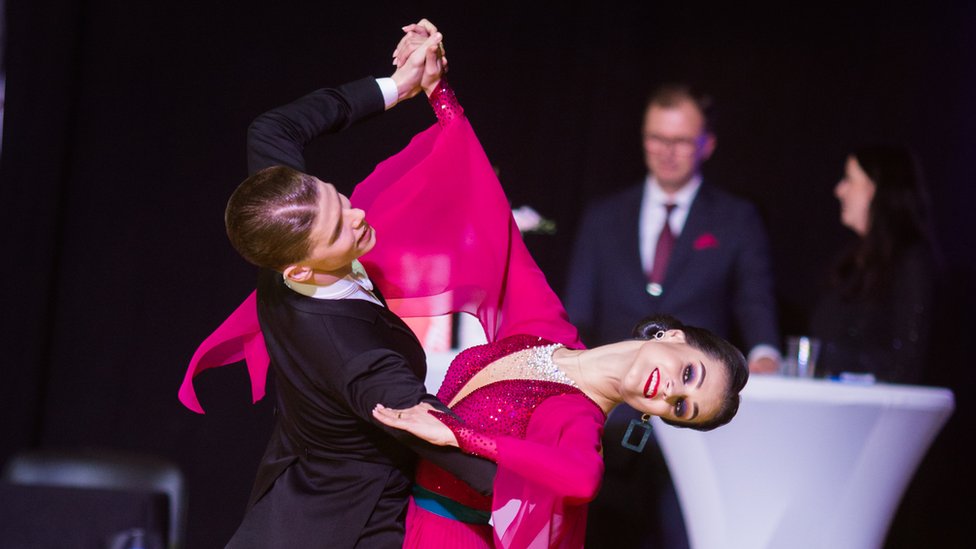With the first Strictly Come Dancing live show on UK screens later, Nell Mackenzie looks at how professional ballroom dancers and coaches around the world are continuing to cope with the impact of pandemic restrictions.
When Covid-19 closed the ballroom dance studio where Madis Abel and Aleksandra Galkina practised, it was their first break in eight years.
Mr Abel could finally recover from the hip injury he had sustained months earlier. “Usually, I just have to keep going and going,” says the Estonian.
He and his Russian partner are highly ranked in the world of international standard ballroom dancing. This includes the waltz, tango, foxtrot, Viennese waltz and quickstep categories.
In a normal year, their 12-hour weekdays at their base in the Estonian capital of Tallinn would see them first practise for three hours, and then spend the rest of their time teaching other dancers. On weekends they would travel to competitions across Europe and around the world.
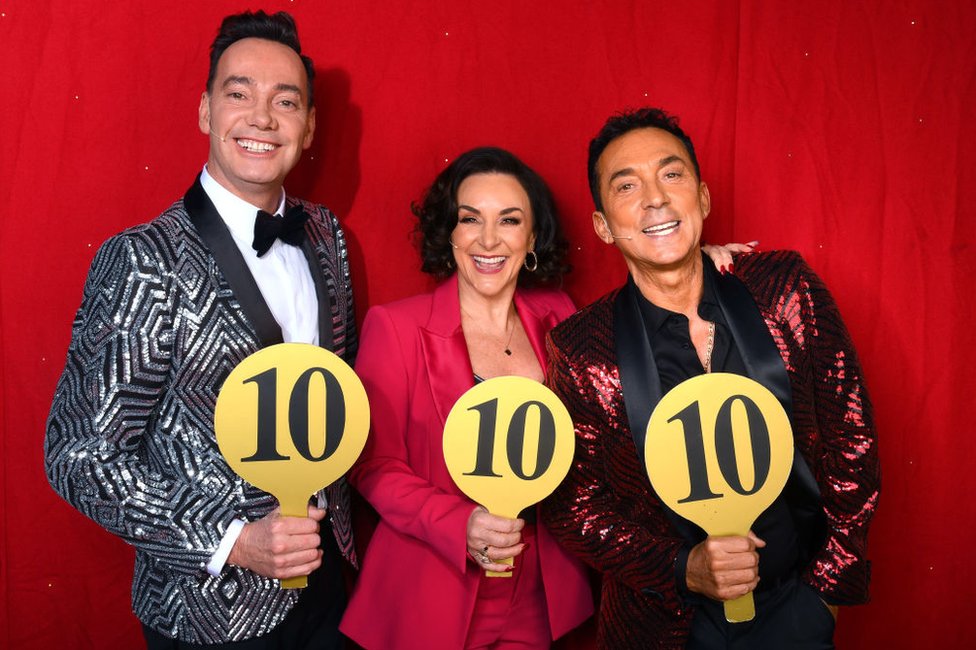
When lockdowns darkened dance floors back in the spring, the couple separated temporarily, and Ms Galkina flew home to Russia.
But Mr Abel says they definitely were not “just chilling”. Instead they moved their lessons online, teaching students via video calls.
And after his hip recovered, both logged many hours in the gym. “I like to kill my body with exercise,” he says.
Last month they attended a local competition in Estonia, their first since February. “It felt so good to be back,” says Ms Galkina. “Without the competitive life, it’s not the same.”


New Economy is a new series exploring how businesses, trade, economies and working life are changing fast.

New York-based Edward Simon is a former American smooth champion – which shares the same dances as traditional ballroom, but also allows additional spins and jazz moves.
Before the arrival of Covid-19 he judged and coached at competitions around the world, and the bulk of his revenues came from coaching and choreography sessions people would schedule with him at these events.
High-level coaches like Mr Simon can earn as much as £400,000 a year. This is more than top professional dancers, who earn in excess of £100,000.
When Mr Simon’s travelling schedule was cancelled, he pivoted his attention to develop a business that he co-owns, Dance Teachers Network, online. This offers classes to both dancers and instructors.
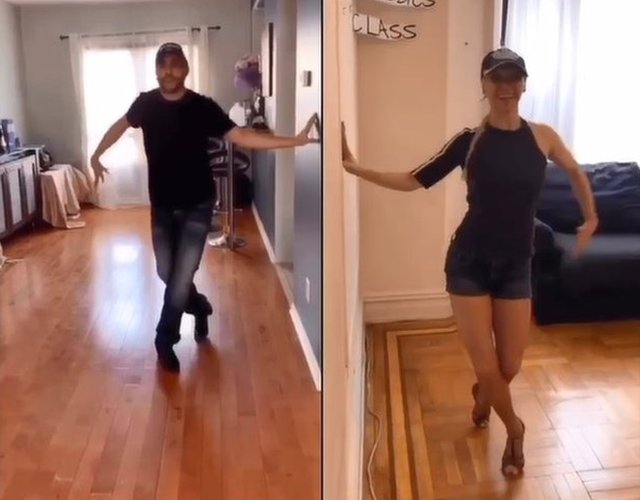
“My job right now is to help these teachers on their path,” says Mr Simon. “It’s the most important thing I need to do for the industry right now.”
He says that he has turned a growing number of instructors on to Zoom, and that it has been transformative for many. One particularly reluctant instructor is said to have won back 70% of his students.
Mr Simon adds that another teacher told him how, during a lesson, when he reached up to adjust his video camera with two hands, his student said, “Oh you are giving me a hug, that means so much to me right now.”
However, unlike his face-to-face lessons, Mr Simon is currently still offering his online sessions for free.
Two other ballroom dancing coaches who have moved online since the start of the pandemic are Slawek Sochacki and Marzena Stachura. Yet even before this, the impact of Covid-19 meant they had to relocate to the other side of the world.
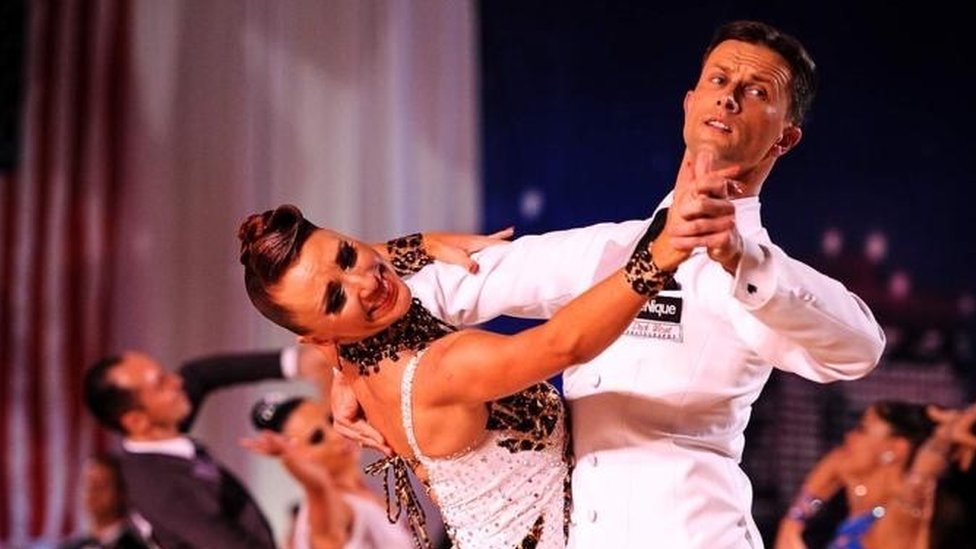
The four-time, undefeated American smooth champions had to go back to their native Poland, temporarily, after 18 years in the US. This was after the landlord of their dance studio near Los Angeles demanded they continue paying the $9,000 (£7,000) monthly rent, even when they were required to close.
Ms Stachura says they found a welcome, paying client base in Poland. “People said, ‘Wait a minute, we were already asking you guys to come back like three years ago, to come teach us.'”
The dance partners charge $130 for a one-on-one 45-minute online session, dropping to $20 per person for group calls.
Back in the US, New York-based coach Tatiana Keegan has started to offer daily Latin dancing exercise classes via live streams on Facebook. The lessons are free, but participants can choose to make a donation.
Ms Keegan, who is also the current US Latin dance champion for couples over 35, adds: “I wanted to give a sense of belonging… and to make my students understand they can stay in dancing shape from their living room.”
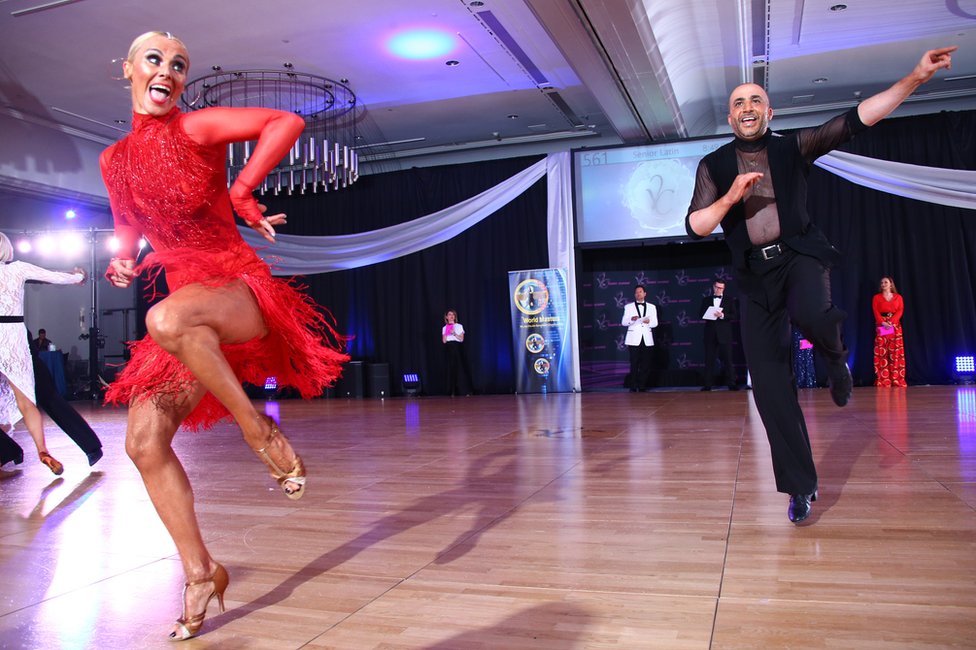
She has now taught more than 90 hour-long online classes, gaining students from countries such as Turkey, India, Spain and Italy.
The lessons are for her too, she says, as they keep her in shape for her own competitive dancing.
“I’m gonna keep going,” she says. “If I don’t dance, I’ll die.”
Also in the US, Michelle Hudson took her annual dance competition, Heart of America Dancesport Championships, online.
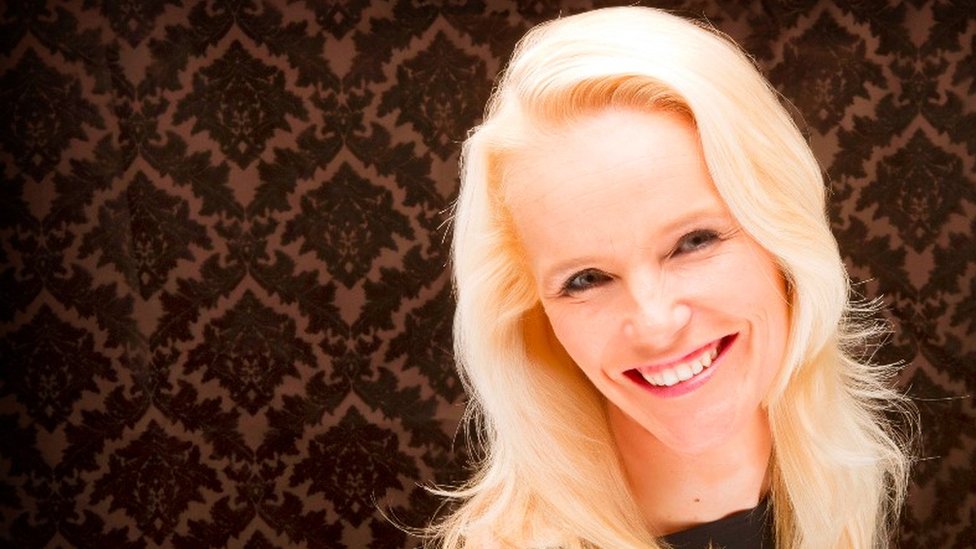
This year’s event, in August, saw more than 2,000 entries. Entry for professionals was free and for amateurs there was a $75 registration fee, plus $25-$65 for dancing fees.
Instead of travelling to the usual host city of Kansas City, Missouri, entrants slapped on sequins and make-up, and either went to their local dance studio or set up makeshift ballrooms at home.
One couple even performed in a park, and some younger dancers who normally would not have been able to afford to travel to the event, were able to compete remotely against more established pairs.
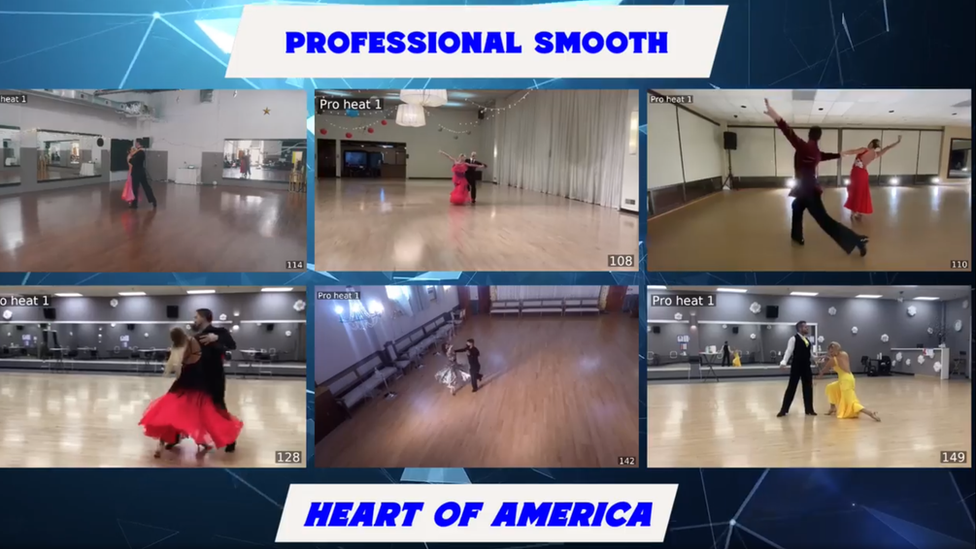
And because the event was live streamed for free, the competition reached a new audience.
“I had dancers tell me that their parents had never seen them dance before,” says Ms Hudson. “And some of their family members are elderly and have been quarantined. They haven’t seen them in months, but they got to watch them dance.”
For professional dancers who have seen competitions suspended, Mr Simon thinks this pause could actually ultimately be to their benefit.
“As a coach, sometimes it’s hard to say, ‘Take a breath,'” he says. “Let’s really focus on something rather than do, do, do.
“How do you change something? How do you get to the next level? And that’s hard to do in regular time. So this time period allows that to happen.”
Back in Estonia, Mr Abel and Ms Galkina say they will keep practising ahead of the world returning to normal.
“We will keep improving, and trying to get something new into our dancing, so that when we finally get out of this lockdown we can absolutely blow everyone off their feet,” says Mr Abel.

